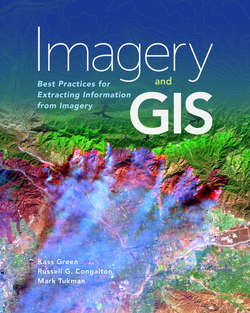Читать книгу Imagery and GIS - Kass Green - Страница 56
На сайте Литреса книга снята с продажи.
Pricing and Licensing
ОглавлениеPrice is the amount a user pays to gain access to imagery. Licensing refers to the restrictions placed on the use of the imagery. Licensing and pricing are often linked. Much of the medium- and low-spatial-resolution remote sensing data collected is free and its use is unrestricted (i.e., the data is in the public domain). Other imagery, especially high-resolution satellite imagery, is either severely restricted by government policy or accessible only through the purchase of a license with associated restrictions on the user’s ability to share the imagery with other users.
Because the primary demand for low- and moderate-spatial-resolution imagery is from the public sector, acquisition and distribution of much of the low- and moderate-spatial-resolution civilian satellite imagery acquired by the US government and the European Space Agency (ESA) is funded by taxpayers and available to most users at no charge with few or no use restrictions. As a result, NASA earth observation data, Landsat imagery, National Oceanic and Atmospheric Administration (NOAA) weather imagery, and the ESA’s Sentinel imagery are all freely available to most users worldwide.
The collection of high-resolution airborne imagery in the United States is usually purchased as a service by government agencies from commercial providers. The agencies pay the provider to collect and process the imagery, with the agency retaining all or most rights to the imagery. Similar to the availability of low- and moderate-resolution satellite imagery, most high-resolution airborne imagery is made available by agencies to the public at no cost, although some charge user fees. The USDA NAIP collects high-resolution, 4-band multispectral imagery over one-third of the continental United States every year at 1-meter spatial resolution. The imagery is available to the public at no cost and with no user restrictions. Most of the NAIP commercial providers also offer the ability to “upgrade” the imagery to 30- centimeter spatial resolution on a paid subscription basis. The upgrades are available because the providers capture the imagery at the higher resolution and resample it to the lower resolution for the public domain product. The provider then makes the higher resolution product available through a licensing agreement that restricts the use of the imagery (i.e., the purchaser is restricted in some way from copying or sharing the imagery with other organizations). Besides NAIP, many states and local governments retain commercial firms to collect airborne high-resolution multispectral and lidar data over their jurisdictions. Usually, the imagery is made available to the public at low or no cost, and with few, if any, use restrictions. Private companies such as utility and forestry firms also contract with airborne providers to produce high-resolution imagery of their properties.
Until recently, high-spatial-resolution satellite imagery was either completely government funded with use severely restricted, or partly government funded, with use restricted by licensing. For example, the United States, Russia, China, India, and Israel all have constellations of satellites that are fully funded by their government agencies but whose imagery use is strictly restricted to security agencies.
The passage of the 1992 Land Remote Sensing Act made it possible for US commercial companies to build, launch, and operate satellite sensors able to collect high-resolution imagery globally. Although fully commercial, the first companies to launch high-resolution systems received large contracts from the National Geospatial Agency of the Department of Defense for imagery. As a result, the funding for the imagery is part government and part commercial. The commercial companies distribute the imagery through licensing agreements that restrict either the amount of time the imagery is available for use or the sharing of the imagery with other organizations. This quasi-public/private funding model for high-resolution satellite imagery with licensing restrictions has since been replicated by several companies (e.g., DigitalGlobe, Airbus, Planet, and DMC constellations).
